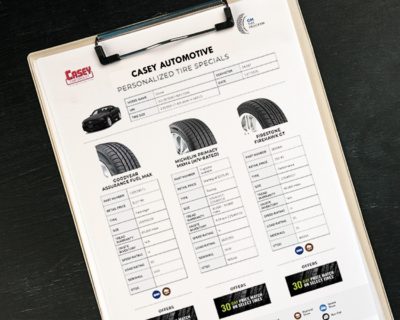Learn

F&I’s 300% Rule Enters the Service Drive
As the old service saying goes, fixed absorption will always carry the store. Read on to learn how an old F&I axiom can ensure that’s always true.
“Present 100% of your products to 100% of your customers 100% of the time” is the credo F&I pros follow — at least for those living above $1,500 per copy. Also known as the 300% Rule, those who subscribe to it assume everyone’s a buyer. It’s a mindset we could all use on the service drive.
Those same F&I producers will also say rapport isn’t a factor in their success — a luxury not afforded the guys and gals managing your service lane customers. Therein lies the rub, with advisors prequalifying customers based on their budget and assumptions. But is that the experience customers want from your service department?
When eAdvisor sister company TEXT2DRIVE surveyed 1,000 vehicle owners in March 2022, only one in three said they were “very familiar” with their vehicle’s factory-recommended maintenance schedule. According to the same survey, the No. 1 reason customers prefer dealer service departments over aftermarket shops is because they believe you are more knowledgeable about their vehicle. “Trustworthy” was listed at No. 2.
So, when’s the last time a happy service customer tapped the brakes at the end of your drive to reveal a burned-out brake light your team missed? What happens to all that rapport your advisors built when the customer discovers the burnt bulb a week or two later?
And when’s the last time an air filter or multipoint inspection sat on an advisor’s desk, only to be returned to the tech with no upsell? Did it even get offered to the customer? How long was the tech waiting around for the customer’s response?
That’s why F&I’s 300% rule applies to what happens on your service lanes, especially at write-up. As the old service adage goes, your best closing ratio is at the time of write-up when your advisors are talking to your customers about their vehicle’s maintenance needs based on the same schedule printed in their owner’s manual.
The best part is your advisors will be setting the stage for your technicians to be your best salespersons. Selling maintenance upfront tells customers that the inspections your technicians perform are designed to reveal needed repairs, not maintenance items like fluids and bulbs.
That also translates into service efficiency, with techs able to begin immediately after the inspection on maintenance work sold upfront. That means the car could still be on the lift when the customer approves the repairs your tech suggested through their inspection.
But how does a busy, high-volume service drive present 100% of a vehicle’s maintenance needs to 100% of your customers 100% of the time? This is the exact question Service Lane eAdvisor answers, creating a “fast march” that assures several key steps don’t get missed.
eAdvisor users will introduce the system’s OBD2 device as a tool that wirelessly communicates what the customer’s vehicle needs to the advisor and their OEM. That introduction usually opens up customers as well as a discussion about maintenance.
But here’s what eAdvisor can help prevent: Do you remember when, in 2018, several automakers rolled back spark plug intervals from 100,000 to 60,000 miles? With data showing that most vehicle owners look to trade out at 72,000 miles, those automakers were giving service departments in their network a chance to capture work original owners are more likely to pay for than second owners.
Unfortunately, many service departments missed the memo, and an excellent opportunity to capture maintenance work went unrealized. If they had eAdvisor, the system’s OEM connection would have caught the rollback in service intervals. So, yes, eAdvisor also ensures your advisors offer the right items to the right customer every time.
As for the bulb example, we know it takes at least two to check each one — one standing outside checking bulbs as a tech inside cycles through each exterior light. That’s about two to three minutes per tech, a billable tenth of an hour. That adds up to an hour of inspecting bulbs for every six vehicles. The question is, what else could your two techs do with that hour if advisors presold them on the drive with the eAdvisor light show, a feature that flashes all exterior lights once the OBD2 wand completes its vehicle scan?
F&I pros who subscribe to the 300% Rule say it also offers legal protection. Most will point to a case in which an elderly couple was not offered — and did not buy — credit life insurance. The husband died shortly after, and the widow sued the dealership, claiming that it had an obligation to offer the insurance. Stories like that caused dealers to begin using accept-and-decline forms to provide evidence the dealership offered the coverage.
How does your dealership protect itself against claims that needed repairs, including safety recalls, were not presented at write-up? A policy stating that all maintenance needs are presented offers a solid defense if challenged in court. Service Lane eAdvisor would ensure that process is followed 100% of the time on 100% of customers 100% of the time.






